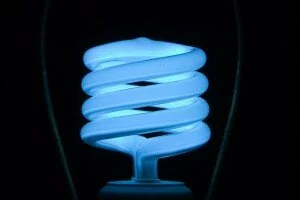 “Our goal should be to create a world with abundant, clean and cheap energy for all. This is an objective that reconciles progress and planet. It’s a challenge that can bring rich and poor countries together in a common goal. If we are to address climate change, we must turn to humanity’s familiar benefactor, technological innovation, and apply it to developing better clean energy.” - Alex Trembath
“Our goal should be to create a world with abundant, clean and cheap energy for all. This is an objective that reconciles progress and planet. It’s a challenge that can bring rich and poor countries together in a common goal. If we are to address climate change, we must turn to humanity’s familiar benefactor, technological innovation, and apply it to developing better clean energy.” - Alex Trembath
Consider the hidden benefits of LED lighting over the traditional incandescent, fluorescent and HID lighting methods.
In an era of “green”, energy efficient and environmentally friendly lighting, the LED lights such as LED Bike Lights, LED Flashlights, LED Headlamps, LED room/flood lights and Off Road LED Lights are far superior in obvious ways. LED light advantages include greater efficiency (approximately 1/5th the power consumed compared to a comparable incandescent bulb of same light output) improved LED life of up to 50,000 hours, little to no radiated heat and they will light in any temperature (fluorescents “flutter” with a low light output in cold temperatures).
LED lighting also has a definite advantage on the environmental impact scale. There is no glass to break and no mercury to pollute the environment, such as contained in fluorescent and CFL bulbs.
The hidden benefit of the LED is the “clean” light it gives off compared to traditional lighting. Recent and ongoing studies have proven that the CFL bulb emits a “dirty” light output consisting of high levels of UV and RF frequencies. This “dirty” light output is shown to cause skin disorders on sensitive skin patients, migraine headaches, sleeping problems, etc., increasing in patient numbers as more and more CFLs are sold due to government restrictions on incandescent light bulbs. CFL “dirty” output levels are 90 times higher (450-500) than in LEDs (5-10) and 22 times higher than in incandescents (20-25).
A level of “50” is considered a safe level.
So before you rush out to buy a basket full of “energy saving” light bulb replacements in hope of cutting electricity costs, consider the downside to CFL and other Fluorescent lighting sources – health issues resulting from harmful RF waves. Deciphering which lights are truly causing a negative health impact needs to be tested using specific equipment, not including Lumen Testing measurements, but actual RF levels.
These kinds of improvements in lighting can be used for a plethora of health related applications including hospital and wellness center implementation. But the real benefits will be seen in residential applications, and energy costs can be reduced even more by switching to LEDs
